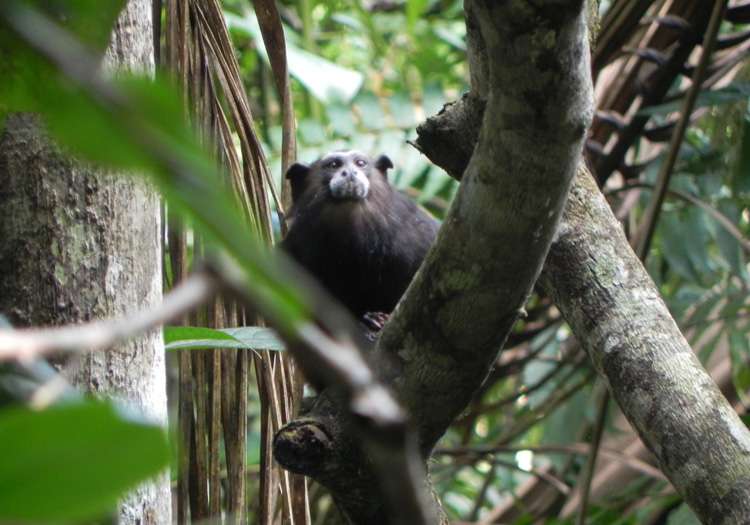Monkey droppings complement field observations, researchers report

In South American rainforests, researchers can tell one saddle-back tamarin from another, but what's more difficult, is to see what the squirrel-sized monkeys are putting in their mouths. Researchers are beginning to rely on their droppings to find out what bugs and other invertebrates the monkeys munch on.
Using high-throughput sequencing, University of Illinois researchers found that 20 tamarins from five social groups in northern Bolivia consumed invertebrates from 11 orders, 15 families and 12 genera over a three-week period, as reported in the American Journal of Physical Anthropology.
"This is really exciting; it is the first time that we have been able to get detailed data like this," said Elizabeth Mallott, a doctoral candidate in the Department of Anthropology. "Their hand goes into a tree hole, and we don't know what they are coming out with. It is nice to finally be able to report the amount of diversity of what goes into their mouth. We wouldn't be able to do it without these molecular methods."
The combination of behavioral observation, ecological sampling, and high-throughput sequencing will give researchers insight into the tamarins' foraging strategies and prey preferences, said Mallott and co-authors Paul Garber, an emeritus professor of anthropology, and Associate Professor of Anthropology Ripan Malhi, who is a member of the Carl R. Woese Institute for Genomic Biology.
"You can't just go out and say, 'I'm going to collect feces,' and not care what else is going on," Garber said. "There is no substitute for going out and watching what the animals do, where they acquire the food, whether they forage alone or work together in a coordinated way, and whether that gives them an advantage in capturing prey. There are a lot of questions that require you to go out and watch them."
This type of study can also help identify resources that are essential to conserve endangered species, Garber said. "If we can know what these guys are eating and where they are foraging to get these resources, we can better identify the microhabitats that need to be preserved."
According to behavioral observations from a previous study, tamarins eat 61% fruit, 22% arthropods (invertebrates), 11% gums and saps, and 6% nectar during the dry season from June through September. Of that 22%, this study found, the tamarins are eating spiders, cockroaches, beetles, ants, grasshoppers, water midges, flies, wasps, moths, and katydids, among other invertebrates.

More importantly, they identified about 20 families and genera that had not been reported as part of the tamarin diet before. The most common Order identified was Orthoptera, which includes grasshoppers and crickets, followed by Aranea (spiders, scorpions, mites, and ticks) and Hymenoptera (ants, bees, and wasps). This may be due to PCR bias or the fact that bigger species have more DNA that can be amplified.
"You do have to be a little bit careful with this technique because it is so sensitive," Malhi said. "We have had conversations that maybe the tamarins weren't really eating that insect, maybe that was an insect that ate another insect, but we are still getting that DNA sequence."
Insects are a very nutritious resource that has been overlooked, Malhi said. Some researchers believe this type of high-protein, high-fat food may have helped us evolve to support larger brains, which led to tool use, cooperative hunting, and food sharing. To complement traditional anthropological research, Malhi is using this technique to analyze 3,000-year-old human feces from the Southwestern U.S.
To follow up this study, these researchers also plan to work on quantitatively identifying the invertebrates in the tamarin diet. They will also integrate this data with ecological data on seasonal invertebrate availability and diet differences between males and females, as well as juveniles and adults.
More information: "High-throughput sequencing of fecal DNA to identify insects consumed by wild Weddell's saddleback tamarins (Saguinus weddelli, Cebidae, Primates) in Bolivia," DOI: 10.1002/ajpa.22654
Journal information: American Journal of Physical Anthropology
Provided by University of Illinois at Urbana-Champaign




















